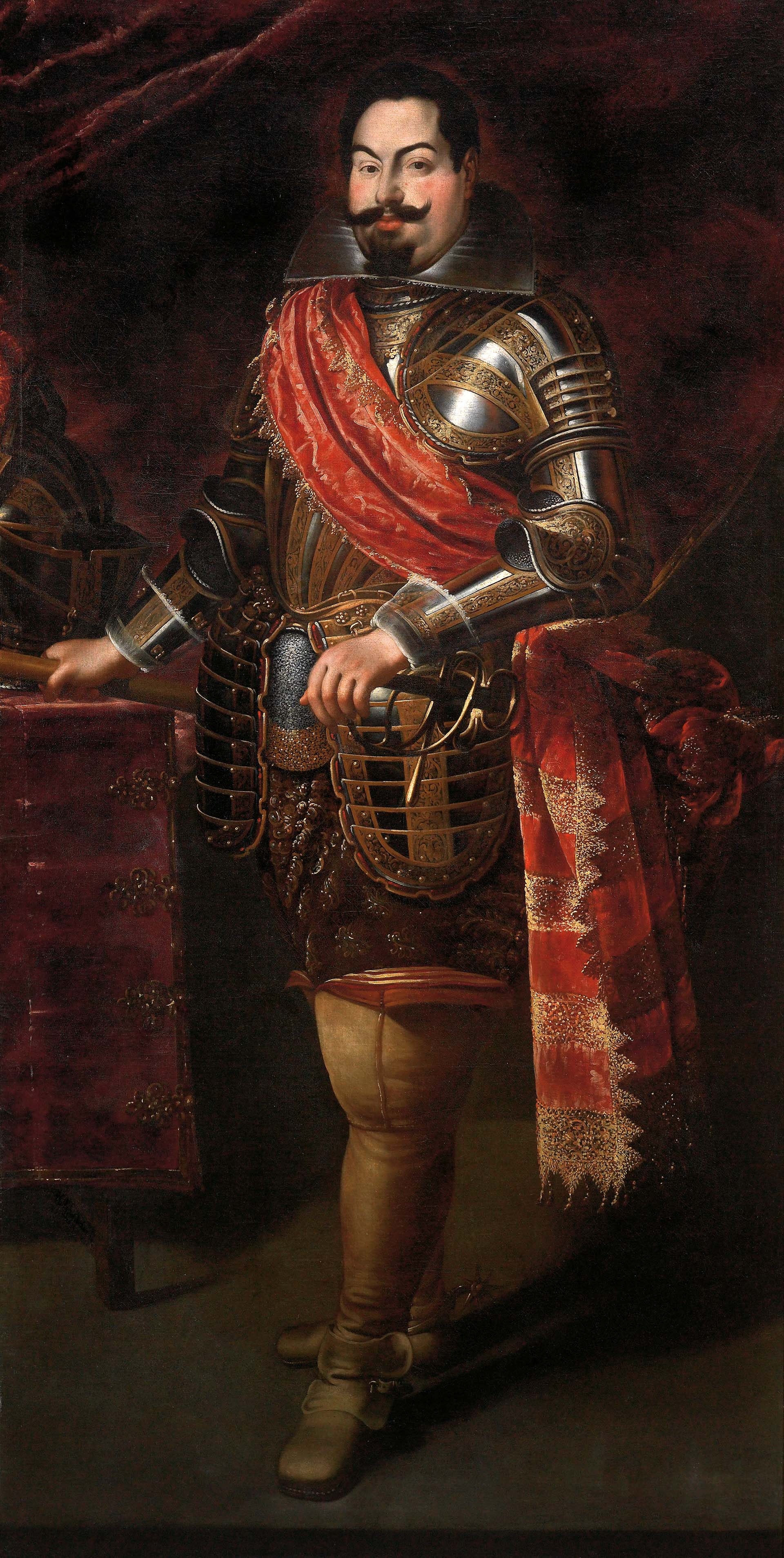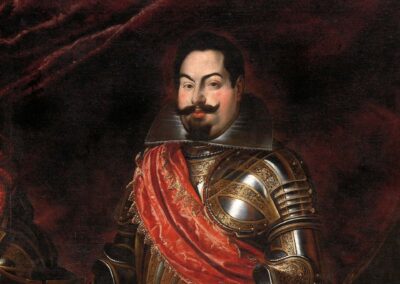This posthumous portrait of Gómez Suárez de Figueroa, 3rd Duke of Feria (1587-1634), is signed and dated by its author, Felipe Diriksen, in 1635, a year after the death of this military and political figure who served King Philip IV. It is almost contemporary with the canvases commissioned by Vicente Carducho and Jusepe Leonardo at the request of the Count-Duke of Olivares to commemorate the victories of the army of Alsace commanded by the portrait in 1633. annus mirabilisThe Duke of Feria's success was attributed to him (A. Úbeda de los Cobos, 2005, p. 142). None of the three painters was able to portray the Duke of Feria from life, as he died barely three months after these victories in Munich, where he had to retire due to the typhus epidemic that decimated his army. Nonetheless, the similarity between these portraits suggests that they all drew from the same source.
Although he had a long diplomatic and political career, having held several extraordinary ambassadorships and been appointed viceroy of Valencia and Catalonia and twice governor and captain general of Milan, the 3rd Duke of Feria is chiefly remembered as one of the last able military men of the Spanish Monarchy. Diriksen, while following the model of the courtly portrait established by Pantoja de la Cruz, emphasised the military figure of one of the generals who achieved the greatest fame in the reign of Philip IV. His attire is very similar to that of the portraits in the Salón de Reinos: half armour, stiff breastplate, red captain general's sash and golden spurs. The pose is typical of a court portrait: the right hand holds the baton of command and rests on a buffet, while the left hand rests on a sword with a looped hilt. Although the type and decoration of both Carducho's portraits and this one are very similar to that of the armorial armour in the Army Museum, none of the painters must have had access to it, as it is very clearly distinguished by repetitive silver iconographic motifs of five-pointed stars, monograms "F" and crossed palms ringed by a ducal crown (MUE-34999, a donation of the 17th Duke of Medinaceli).



